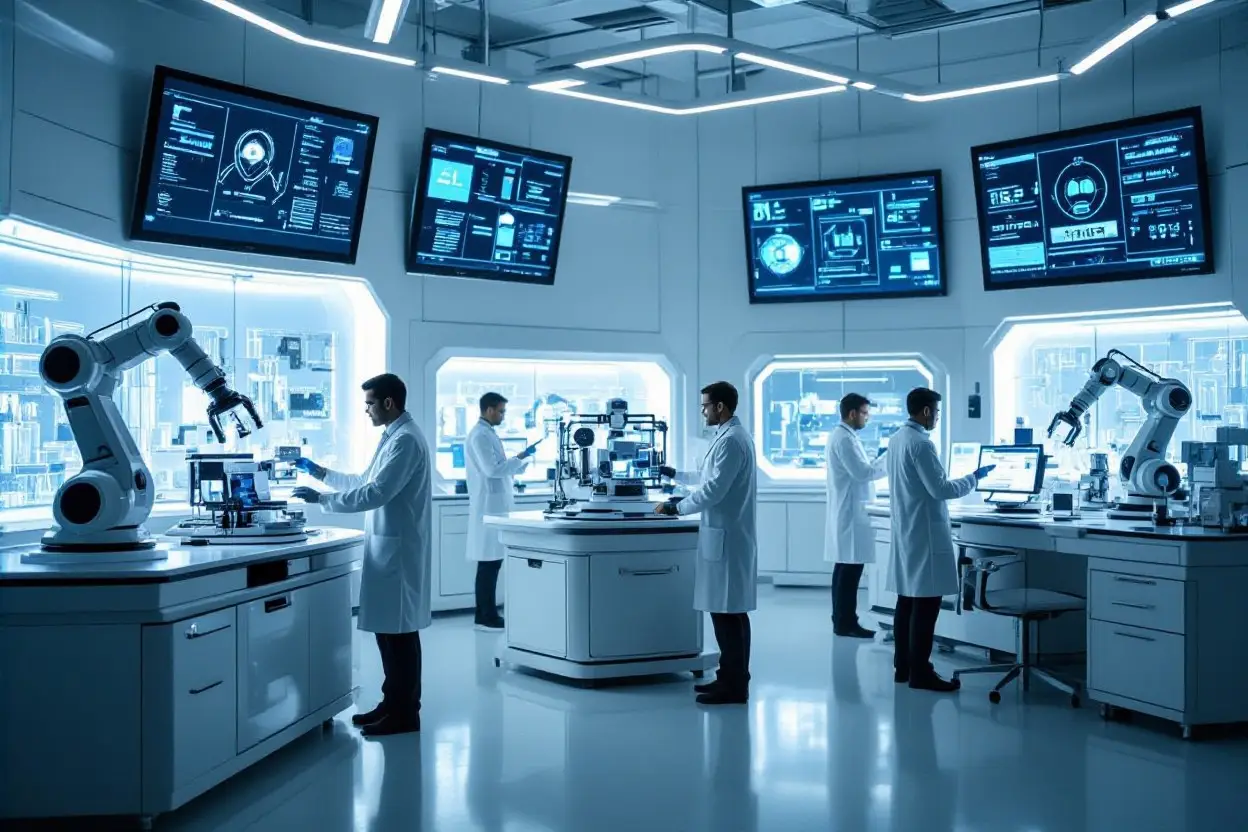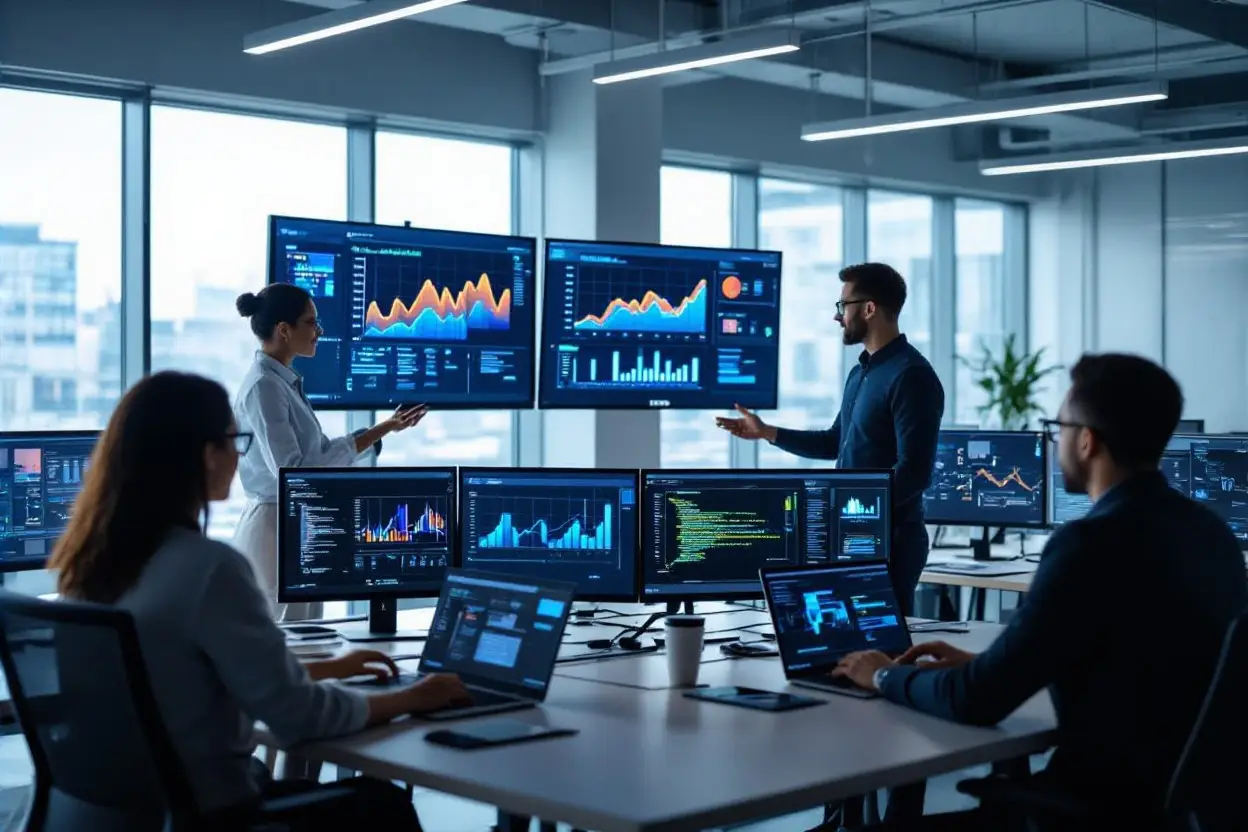In July 2025, you observed significant strides in AI tools across the UK and USA, focusing on practical enhancements and expanded capabilities. New releases like GPT-5 and open-source GLM-4.5 improved reasoning and customization options, while Microsoft Edge’s Copilot Mode transformed browsing into a productivity hub. Creative sectors benefited from Adobe Firefly’s generative design enhancements, and automation advanced with coding assistants like Cursor’s Bugbot. Meanwhile, AI-powered search engines now handle complex multimodal queries, shaping how you interact with information daily. These updates emphasize efficiency and integration, shaping the future of your AI experience.
Advancements in Foundation Models
You’ll find that the latest foundation models, including GPT-5, Claude 4, and Gemini, are setting new standards in AI reasoning and agentic capabilities. These models not only improve performance but also expand the ability to handle complex, multi-step tasks. With enhanced understanding and cross-modal integration, your interactions with AI become more natural and effective. Both the US and UK markets are witnessing rapid deployment of these models, influencing sectors from content creation to professional automation.
The Surge of Open-Source Innovations
Open-source AI models like GLM-4.5 and Hunyuan3D are gaining traction, giving you more control and transparency over AI tools. These releases address the demand for customizable alternatives to closed-source systems. Their growing sophistication allows developers and enterprises in the US and UK to build tailored solutions, accelerating innovation and collaboration across industries.
In July 2025, open-source models have become a key driver in the AI landscape. You can now access models such as GLM-4.5 that match closed-source systems in capabilities, enabling wider experimentation and deployment without restrictive licenses. This is supported by active communities and rising contributions, particularly in the UK’s AI Growth Zones and US regional hubs. These developments are reshaping how AI tools evolve, promoting transparency and adaptability for your projects and business needs.
Revolutionizing Video and Audio Production
You are witnessing rapid advancements in AI-driven video and audio tools reshaping content creation in both the UK and USA. Platforms like Runway Aleph and Luma’s Modify now enable seamless AI-generated video editing, while Higgsfield Halo leads in audio synthesis with highly realistic voice generation. These tools not only speed up production but also expand creative possibilities, allowing you to automate complex effects and generate diverse multimedia assets—all vital for advertisers, filmmakers, and content creators aiming to stay competitive in 2025’s digital landscape.
Enhancements in Image Generation and Design
Your image creation capabilities are growing with updates from MidJourney and Adobe Firefly, offering generative upscaling and improved harmonization features. Ideogram Character introduces more nuanced, customizable AI-driven design elements, making creative workflows more efficient. These advanced tools support professional artists and marketers in producing high-quality visuals faster, reflecting the broader trend of AI integration into creative industries across the UK and USA.
Beyond basic enhancements, these image AI tools provide new levels of control over style, resolution, and thematic consistency. MidJourney’s latest update enhances detail clarity, making your images sharper and more lifelike. Adobe Firefly’s generative upscaling automatically refines low-resolution images without loss of quality, significantly improving your post-production efficiency. Furthermore, Ideogram Character’s AI-focused customization helps tailor designs that better fit brand identities and campaign goals. Together, these developments equip you with powerful resources to meet growing demand for innovative and visually appealing content in competitive markets.

Simplifying Workflows and Coding Tasks
You can now leverage AI agents like Cursor’s “Bugbot” to streamline coding, automating bug detection and pull request reviews efficiently. These tools help reduce manual errors and accelerate software development. Beyond coding, AI-driven workflow orchestration tools manage multi-step tasks across productivity and creative platforms, enabling you to focus on higher-level priorities. This shift is transforming the way professionals handle complex projects, making your daily operations smoother and more responsive to rapidly changing demands.
The Impact of Task Automation on Productivity
Task automation through AI agents is reshaping productivity by handling repetitive, multi-step activities with speed and precision. Companies in both the UK and USA report increased efficiency as AI tools automate research, coding, and creative processes. This integration lets you allocate more time to strategic work, while AI manages routine tasks. With automation rapidly adopted, some sectors see gains of up to 30% in operational speed, highlighting how AI is becoming an crucial partner in modern workflows.
AI-driven task automation is significantly impacting how you approach your work. By automating coding reviews, research data extraction, and process orchestration, AI reduces bottlenecks and errors that typically slow projects. In the UK, firms integrating these AI agents report faster product cycles, while US businesses note improved accuracy and reduced human workload. As AI continues to evolve, its role expands from support to collaboration, enabling you to enhance productivity without increasing pressure on human resources. This balance is shifting workplace dynamics, emphasizing augmentation over replacement.

Features Shaping Modern Browsers and Search Engines
You will find that the latest AI integrations in browsers and search engines are transforming how you access and process information. Google’s AI Mode now supports complex, multimodal queries, enabling you to combine text, images, and voice inputs for more precise results across the US and UK. Meanwhile, Microsoft Edge’s new Copilot Mode turns your browser into an AI-powered productivity hub, assisting with tasks like data analysis and workflow management, reshaping your online navigation experience significantly.
AI’s Role in Enhancing User Experience Across Platforms
AI advancements are designed to improve how you interact with digital tools across various platforms. From personalized content recommendations to smarter automation of routine tasks, these AI features help make your experience smoother and more efficient. The adoption of multimodal systems that merge text, image, audio, and 3D inputs offers you natural, intuitive ways to engage with technology, increasing productivity and creativity in daily tasks.
Expanding on this, AI now personalizes your interactions by analyzing your behavior and preferences to deliver tailored suggestions and automated support. For example, in creative tools, AI can upscale images or harmonize design elements, reducing your manual workload, while AI agents in productivity suites assist with complex, multi-step tasks. This level of augmentation means the technology adapts to your needs, enhancing how you consume content, manage projects, and create media across both UK and US platforms. The result is a seamless blend of assistance and autonomy designed to elevate your digital workflows.

Emerging Laws and Guidelines for AI Use
The UK and USA are actively developing new regulatory frameworks to govern AI deployment and safety. Recent initiatives such as the AI Safety Summit and the establishment of bodies like the AI Security Institute reflect increased government focus on transparency, ethical use, and risk mitigation. These evolving rules aim to balance innovation with public protection, impacting how firms design, implement, and audit AI systems. Understanding these guidelines helps you ensure compliance and align your AI projects with emerging legal standards.
Corporate Responsibility and Sustainable Practices
Leading organizations in the UK and USA are emphasizing responsible AI development, focusing on transparency, algorithm audits, and environmental impact. Sustainability has become a key consideration, with companies now integrating energy efficiency measures, such as partnering with nuclear energy providers to offset AI’s growing power consumption. By adopting responsible AI practices, you not only meet regulatory expectations but also contribute to reducing AI’s carbon footprint and fostering trust among users and stakeholders.
Sustainability and responsibility in AI go beyond regulatory compliance; they define how you manage AI’s lifecycle. The adoption of algorithm audits helps you identify biases and ensure fairness, while energy usage monitoring is increasingly integral due to AI’s heavy computational demands. Innovations like the UK’s Isambard-AI supercomputer illustrate efforts to build more energy-efficient infrastructure. Embracing these practices strengthens your organization’s long-term viability and demonstrates leadership in ethical AI, especially as scrutiny of AI’s social and environmental effects intensifies across policymaking and consumer advocacy groups.
To wrap up
Summing up, you’ll find that the latest AI news in July 2025 highlights significant updates to foundational language models like GPT-5 and Claude 4, alongside new open-source releases such as GLM-4.5. Tools enhancing creative workflows have advanced with Adobe Firefly’s image generation and Runway Aleph’s video synthesis. AI-driven automation continues expanding, from coding assistants like Cursor’s Bugbot to Microsoft Edge’s Copilot Mode for productivity. In both the UK and USA, developments focus sharply on integrating AI into search, healthcare, and multimodal interfaces, offering you more powerful and efficient AI tools across sectors.
